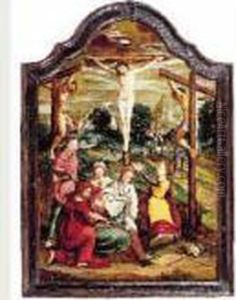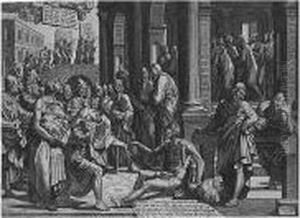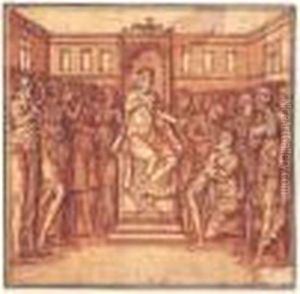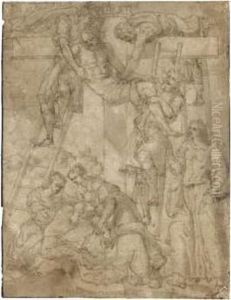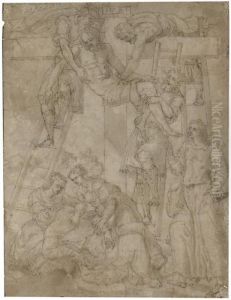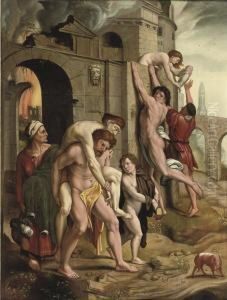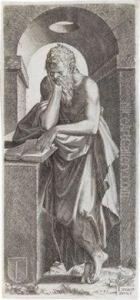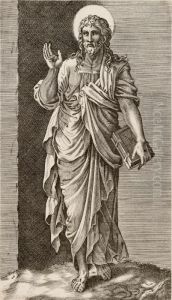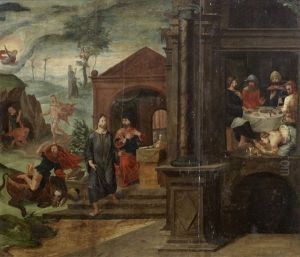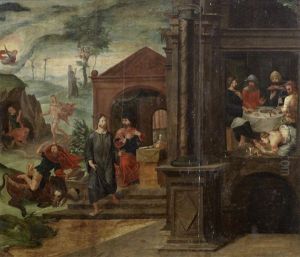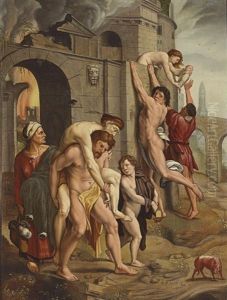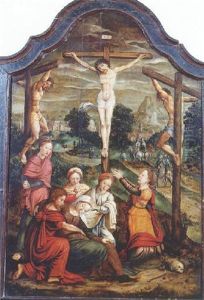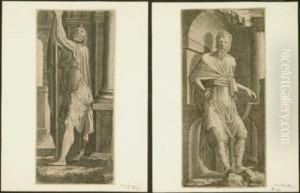Lambert Suavius Paintings
Lambert Suavius, also known as Lambert Lombard or Lambert Sustris, was a Renaissance painter, draughtsman, and humanist active during the 16th century. He was born in the region that is now Belgium, around the year 1510 to 1515. There is some uncertainty regarding his exact birthplace and date, as well as the details of his early training. Suavius is often associated with the city of Liège, where he was most active and where he established his reputation as an artist and scholar.
Lambert Suavius is primarily known for his work as a portrait painter, but he also contributed to religious and mythological themes. He was part of the Northern Renaissance, a period characterized by a renewed interest in classical antiquity and a focus on detailed observation of the natural world. His style was influenced by the Italian Renaissance, as he is believed to have traveled to Italy to study the works of Italian masters, which was a common practice among Northern European artists of the time.
Suavius was also a pupil and later a colleague of the more famous Renaissance artist Lambert Lombard, which has led to some confusion between their works and identities. Lombard was an influential figure in Suavius's life, imparting knowledge of Italian Renaissance techniques and artistic principles. Through Lombard, Suavius became connected to the intellectual and artistic circles of his time, furthering his career as a humanist and artist.
Despite his achievements and connections, Suavius did not leave behind a large body of work, and much of what he did create has been lost or remains unidentified. His contributions to the arts are also overshadowed by those of his contemporaries and his own teacher, Lambert Lombard.
Suavius passed away in 1567, leaving behind a legacy that is recognized among scholars for its contribution to the Northern Renaissance and the transmission of Italian Renaissance ideals into Northern European art. His work continues to be studied for its stylistic connections to the Italian masters and its reflection of the cultural and intellectual exchanges that were central to the Renaissance period.
